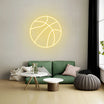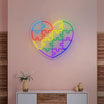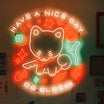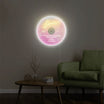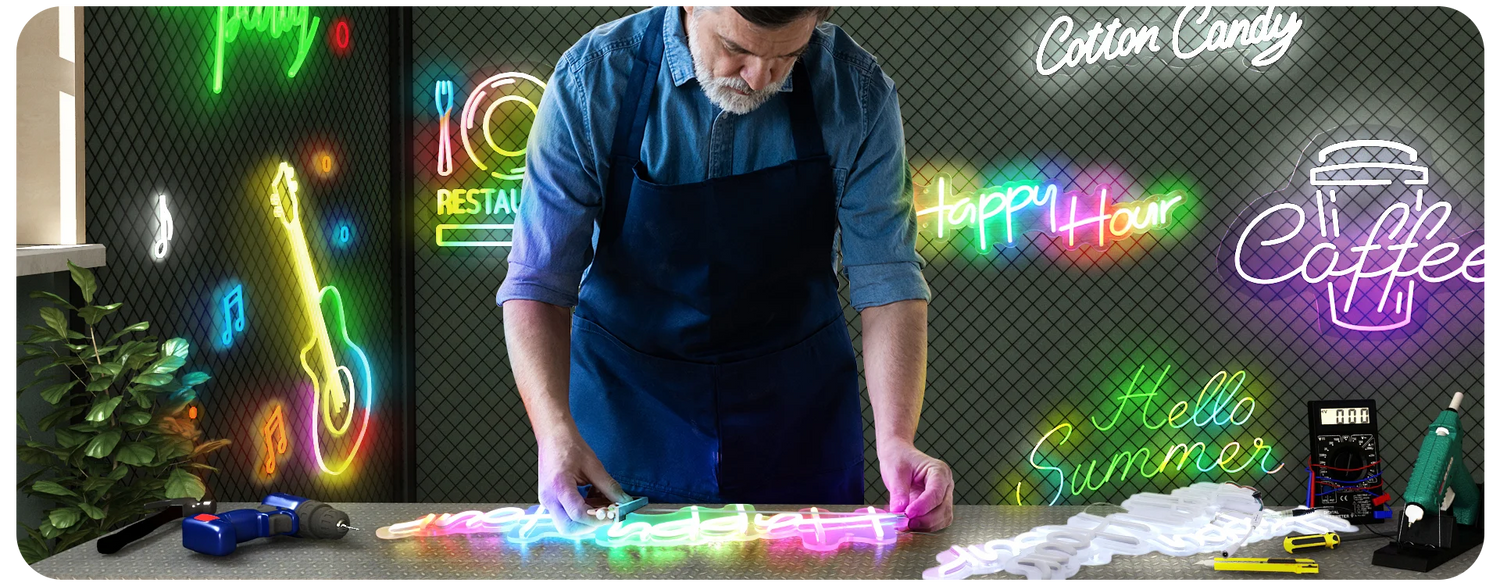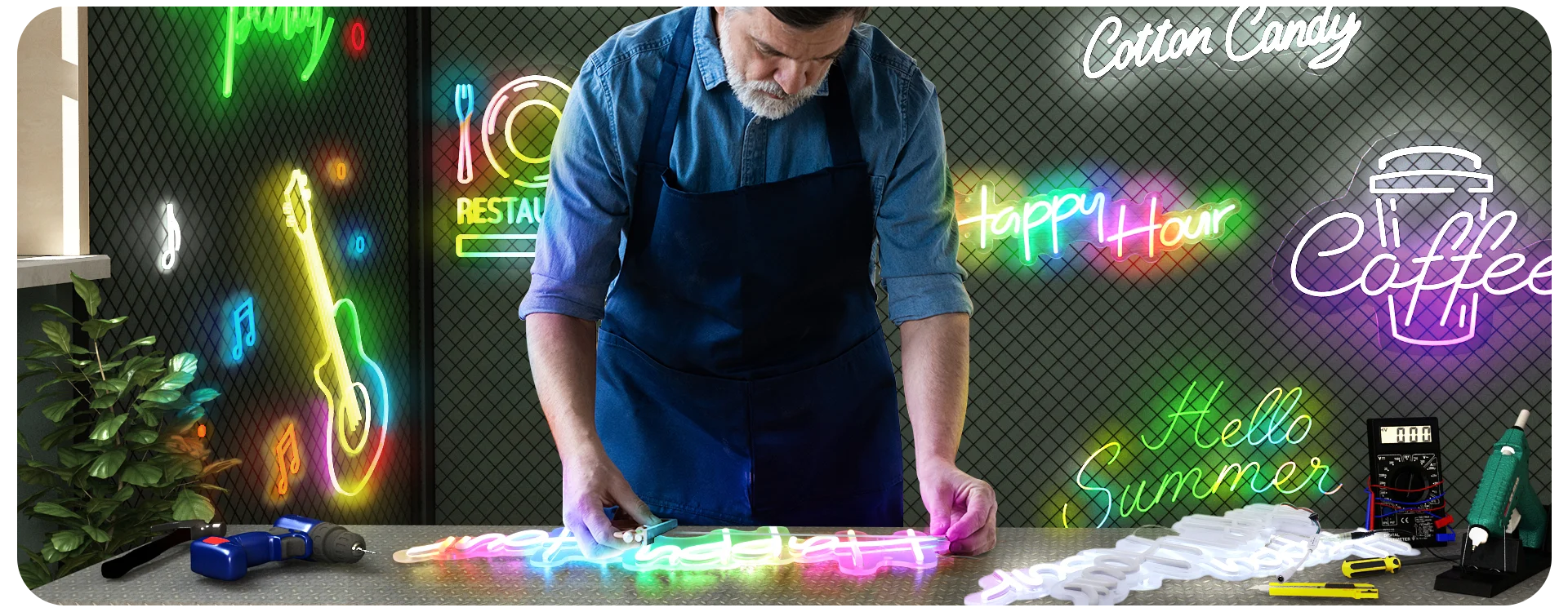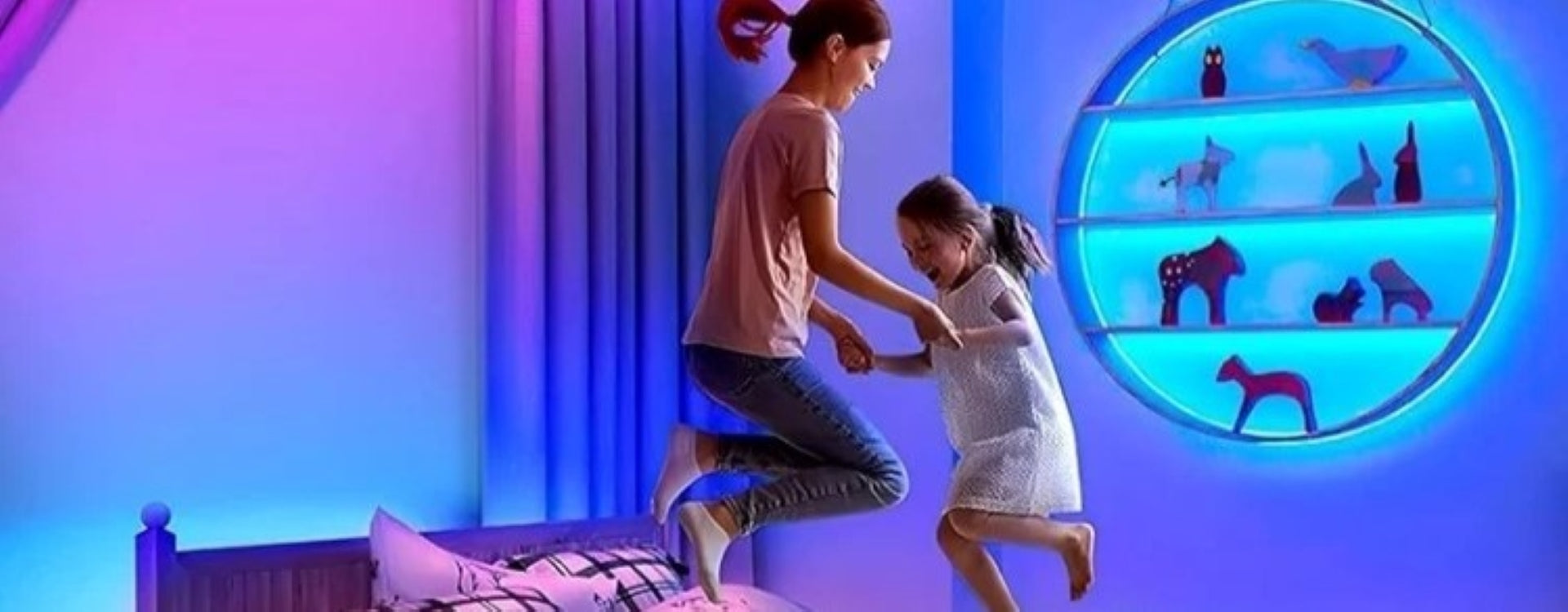Elevate your shop’s appeal effortlessly with an array of sign choices available today. Neon signs stand out as an unparalleled option, boasting longevity and low-maintenance. Imagine your brand gleaming throughout the night! While larger neon signs with intricate designs might have a higher initial cost, their energy efficiency is sure to bring a smile to your face.
How much power does a neon sign use?
Ever pondered the energetic appetite of a neon sign? Consider the mesmerizing red neon light: its consumption dances between a mere 3 1/2 to 4 watts for every foot it stretches. Now, if your enterprise relies on the allure of such signages, beckoning customers until the first light, then neon has a trick up its sleeve. Especially when pitted against its fluorescent counterpart.
Picture this: the red neon serpent slithers for 12 hours every day. By the year’s end, for every foot, it would’ve gobbled up somewhere between 15.33 to 17.52-kilowatt-hours. Fluorescent? Oh, it’s hungrier – gulping down an excess of 50%. The numbers, at a cursory glance, may seem inconspicuous. But tally them over a year, and voilà, the neon’s advantage shines through.
Do neon lights still hold the crown for storefront signage?
Rewind to 2019, and you’d find energy costs hovering around $.12 for every kilowatt-hour.
Crunching those digits, it’s apparent: running a fluorescent sign would’ve set you back a cool $320 annually. Meanwhile, its neon counterpart? A more modest $210.
Neon’s brilliance isn’t just in its glow but also its frugality. With its economical energy consumption, diving deep into the arithmetic shows neon signs lighting the path to cost-efficient storefront allure. Still the top pick for that radiant business front? You bet.
Neon vs. LED: A Luminous Debate
LEDs, those dazzling light-emitting diodes, often find themselves atop the pedestal, hailed for their energy efficiency, especially when compared to their neon counterparts. Some even claim a staggering 90% energy savings with LEDs.
However, this applause for LEDs tends to miss a beat. It often overlooks the intrinsic energy inefficiency of LEDs relative to neon lights.
Picture this: an LED and a neon light, both of equal color and size. Undeniably, the LED sips less power. In fact, a foot of LED tube left glowing for 12 hours every day might only use about 3.5 kWh in a year. But here’s the twist – it doesn’t shine as brightly as the neon.
The playing field shifts when you crank up the LED’s brightness to match neon’s radiant glow. Suddenly, the energy consumption gap narrows. So, for shopkeepers seeking the most vibrant beacon to lure patrons, neon might just still hold the torch high.
Neon’s Brilliance: A Comparative Spotlight with Fluorescent and Incandescent
Neon lights have an edge. When pitted against fluorescent bulbs, they’re efficiency champions.
Consider a fluorescent light in action. It might guzzle up to 50% more energy than a neon tube. The story thickens with high-output fluorescent lamps. Imagine one foot of this HO tube shining proudly for half a day. It ends up consuming a whopping 70 kWh annually.
Now, switch the lens to incandescent bulbs. The energy contrast is staggering. Incandescents can demand up to quadruple the power that their fluorescent cousins do.
So, when you line up neon, fluorescent, and incandescent in the energy efficiency race, neon doesn’t just compete—it often leads the pack.
Lighting the Way: Alternatives to Neon
The electricity chasm separating neon lights and LED signs? Perhaps not as vast as you’d imagine.
LEDs bring a litany of merits to the table, making them formidable rivals to neon’s iconic glass tubes.
An LED’s checklist is compelling: minimal maintenance, no troublesome gases, mercury-free, and absent of fragile glass. Couple that with their capacity to glow brilliantly, emitting negligible heat.
Spot an LED sign designed to mirror neon? They’re omnipresent, and discerning the distinction between the two is nigh on challenging. What’s more, LED signs boast robustness, with an inherent resistance to moisture. Seeking a neon alternative? LEDs might just be the modern marvel you’re after.
In Conclusion: Neon’s Timeless Allure
Neon continues to cast a vibrant spell in the world of signage, balancing energy efficiency and its iconic luminescence. It’s this unique combination that nudges fluorescent and incandescent lights to the sidelines for many business visionaries. This predilection is evident, with a vast majority of U.S storefronts still radiant under neon’s nostalgic glow.
Mindful management of energy expenses? Consider illuminating your neon sign during prime hours. Continuously lighting those mesmerizing tubes night after night may slightly dim their brilliance and potentially affect their longevity. This wisdom isn’t exclusive to neon but extends to both fluorescent and LED neon alternatives.
Desiring a storefront that turns heads and beckons customers? Neon’s captivating charm might be your beacon.
Tempted to invest in a neon classic or its modern LED sibling? Dive into our curated collection of both neon and LED neon signs right here.




